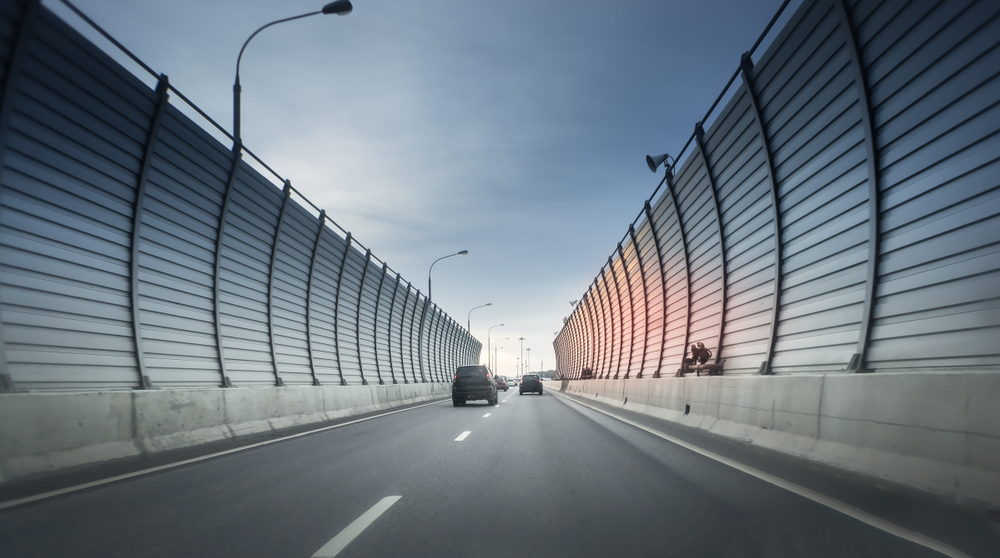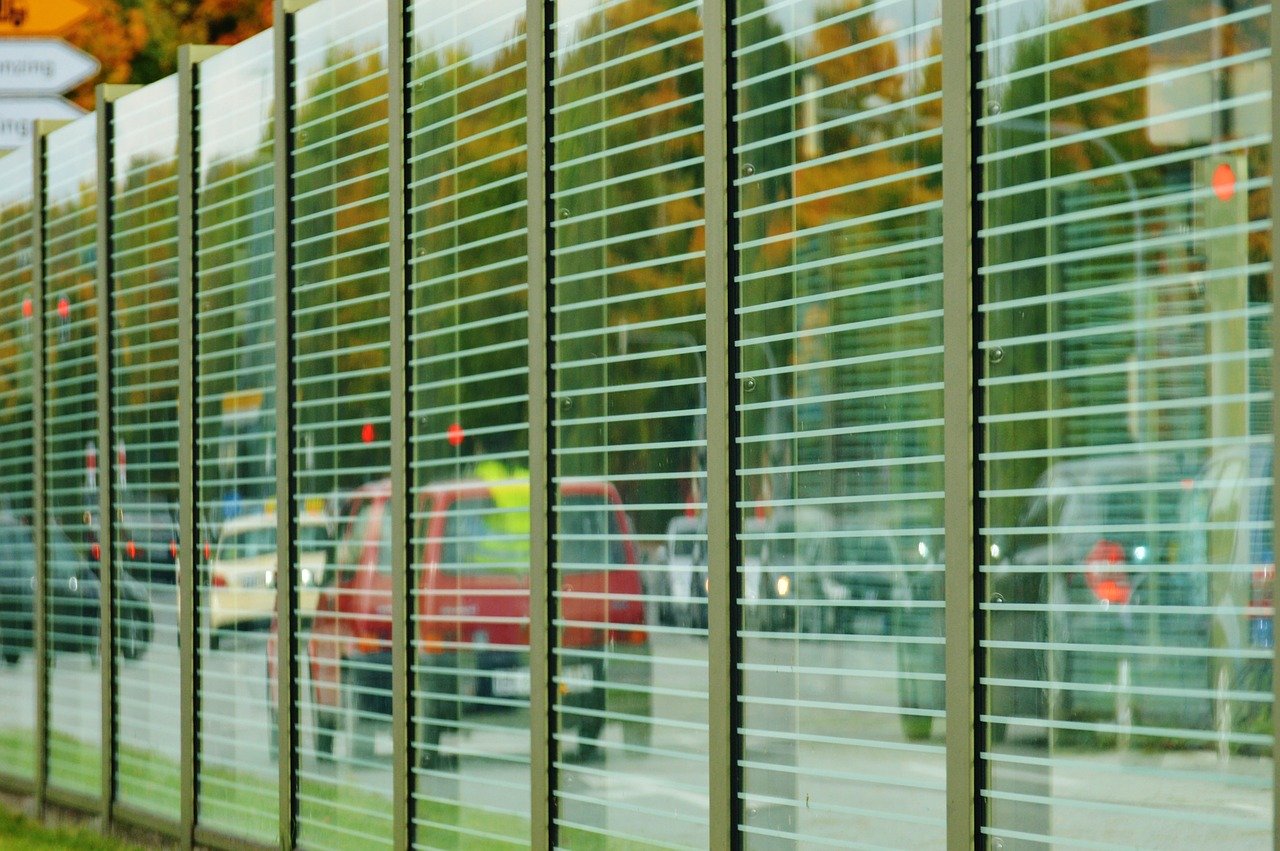
Noise mitigation relies on two basic techniques – sound absorption and sound reflection. The effectiveness of each depends on the noise type, its source, and location.
All Sound is Not Equal
Sound is created when air is compressed into waves, but all sound is not equal. Rapid series of waves results in higher pitches or frequencies. Fewer waves create lower pitches. The effectiveness of noise absorption and reflection is directly related to the frequency of the sound.
Sound Reflection
The most basic sound mitigation technique, noise reflection, uses materials that bounce sound waves away. Block walls, concrete barriers, and the hard exterior of buildings are examples of reflective materials that bounce sound waves away.
The downside of sound reflection is that the sound waves must go somewhere once reflected. Echoes and sound transference are a by-product of noise reflection.

Glass traffic barriers have highly reflective surfaces.
Sound Absorption
Noise absorption employs barriers made of porous materials that allow sound waves to pass into the barrier. As it travels through the material, the sound wave energy is absorbed, reducing noise levels. Sound absorption materials work best in mitigating mid to high-level sound frequencies but are less effective at reducing low level, deep-pitched noise.
Most modern structures include sound absorptive materials in their design. Flooring underlayments, carpet padding, and wall insulation are examples of common sound absorptive materials. In construction settings and other environments where noise is temporarily pervasive, purpose-designed portable acoustic barriers are deployed to provide effective absorption without being too heavy for handling.
Echo Barriers can be placed strategically to absorb as much sound as possible.
For more serious noise mitigation, especially to help achieve legislative noise requirements, absorptive sound barriers are often employed. Many of these are portable and can be configured to adapt to changing sound environments. Echo Barriers, for example, are able to absorb up to 100% of sound in some frequency ranges while only weighing about 13 lb.
Finding the right noise attenuation solution requires an understanding of the sound frequency, source, and local environment.
.png?width=1000&name=20141228_EarlsCourt_%20(368%20of%20375).png)
Portable Sound Barriers
Echo Barrier is an innovative temporary noise control system designed to quickly mitigate noise in dynamic and sensitive work environments.
Distribution available worldwide.

